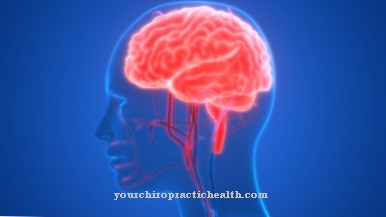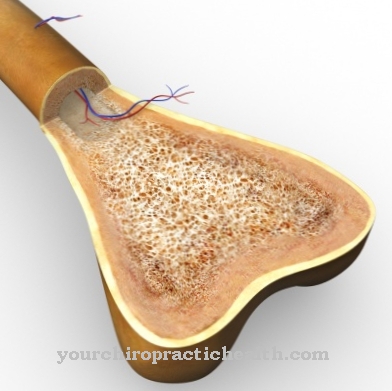The voice enables people to sing and speak through which they express themselves. It generates emotions, is an individual characteristic of every person and can differentiate between tiny nuances.
What is the voice

The voice is like a complex work of art, in which only the interaction of individual elements leads to the overall picture. First of all, the larynx produces a voice (primary voice), which only gains volume and becomes audible to others when it is changed in the mouth, throat and paranasal sinuses (head voice). Here are resonance spaces that act like loudspeakers.
When we speak at a loud volume, the whole body is involved. The resonance chambers ensure the amplification of the sound. The timbre of the voice is generated by the anatomy of the resonance spaces, tongue size, lip shape and tooth position.
When speaking, the head voice is transformed into sounds made up of vowels and consonants through movements of the tongue, lower lip and palate. If the larynx is small, the vocal folds are narrow and the voice is high. With a large larynx, the pitch of the voice becomes lower.
The human vocal range is normally 1.3 to 2.5 octaves. Trained people have a vocal range of three octaves or more. The frequency range is between 80 Hz and 12 kHz. When speaking, the pitches often vary and a vocal melody emerges from which emotions can be read.
Function & task
Everyone has a distinctive voice. It is more than the sound produced by the vocal folds, because speaking, making sounds and singing create emotions and influence the listener.
Language begins with the baby's first cry. It expresses a state of mind and can convey depression, insecurity, sadness, joy and affection. The voice shows our current state of mind and is used specifically as an instrument in many professions. Politicians, moderators, but above all singers and actors use the voice to represent characteristics and to accentuate content.
The voice is shaped by rhythm, tempo and speech dynamics. It can sound natural and pleasant, or it can be perceived as annoying to painful. The pitch determines whether the sound sounds pleasant or unpleasant to the listener.
In order to generate speech, structures in the head, neck, chest and stomach have to be coordinated. Only when the diaphragm, windpipe, lungs and chest work together with the larynx, glottis, pharynx, oral cavity and nose level, does the voice emerge with its very own sound.
The most important voice-forming organ is the larynx. It consists of a skeleton with flexibly connected pieces of cartilage as well as internal and external muscles and the lining of the mucous membrane. The outer muscles anchor the larynx in the neck, the inner muscles connect the cartilage parts together.
As the muscles push the cartilage against each other, different constellations arise again and again, which create a new position, tension and shape of the vocal folds. The larynx itself is also moved up and down, stretching and compressing like an accordion. The angles between the cartilages always change.
The tissue structures that line the larynx are also very complex. The moisture in the lining of the larynx affects the vibrations of the vocal folds and thus the voice. The vocal folds consist of three layers of connective tissue, each with different mechanical properties.
The most important muscle in voice formation is the diaphragm, which curves up the chest when you breathe in. When you breathe out, you use many muscles that are involved in making sounds. A total of nine muscle groups are involved in breathing.
You can find your medication here
➔ Medicines to improve concentration and language skillsIllnesses & ailments
Every spoken word and every tone is preceded by a complex anatomical process. This makes it easy to see that even small impairments can have an impact on the voice.
Voice problems are often caused by changes in the nerves that control the muscles of the vocal apparatus. Injuries and surgery can affect the voice. Inflammation of the larynx can lead to complete voice failure.
Asthma makes it difficult to breathe out and thus affects the voice. In the case of asthma, it can happen that the patient tries to compensate for the restricted breathing and in doing so puts excessive strain on the larynx muscles. Heavy strain leads to pain, dysfunction and exhaustion, but can also produce anatomical changes such as nodules on the vocal folds. The cerebral cortex is responsible for the expression itself. This is where the stimulus emanates, which is sent to all the muscles of the voice via the nerve tract.
To protect his voice from harm, it should not be overused. Targeted therapeutic training can be used against voice damage caused by overuse. Voice protection techniques, which are supposed to relieve the throat and larynx muscles, can also be learned. Training is also the appropriate therapy for organic changes in the larynx, for example in the vocal folds.
Medicines like antihistamines can affect voice function because they dry out the larynx. Hoarseness and coughing fits are the result. Polyps and cysts on the vocal folds are also more common and must be surgically removed. Singers in particular, but also speakers and people who use their voice intensively at work, have to keep their vocal apparatus moist and avoid exposure to smoke and pollutants in the air.
However, if you use your voice correctly, you don't need to worry about fatigue. Larynx operations are often avoidable thanks to increasingly better diagnostic procedures. If they are still necessary, they are much easier to carry out thanks to new technologies such as laser technology.








.jpg)



















